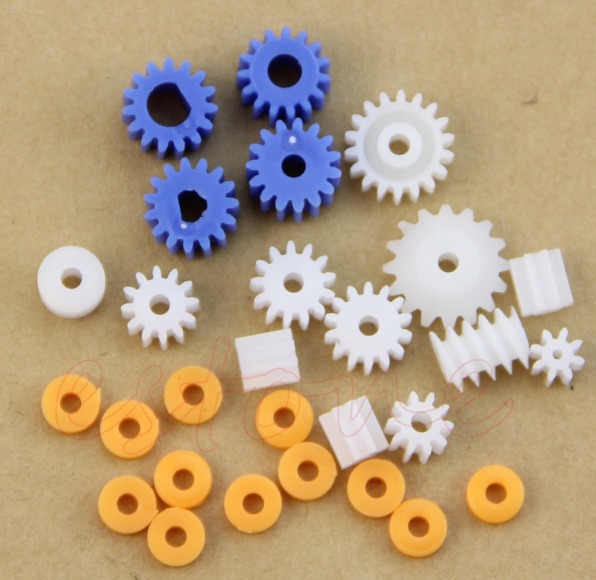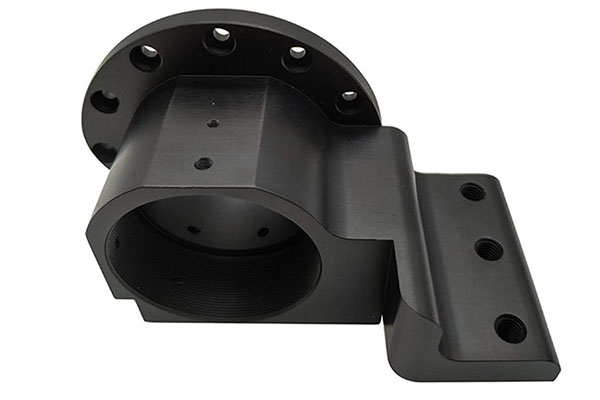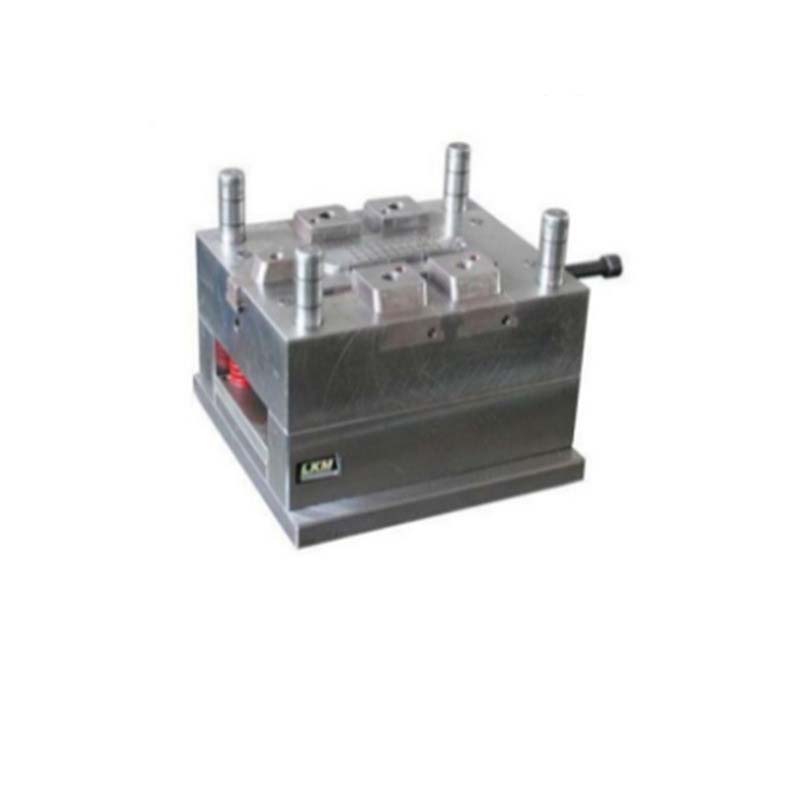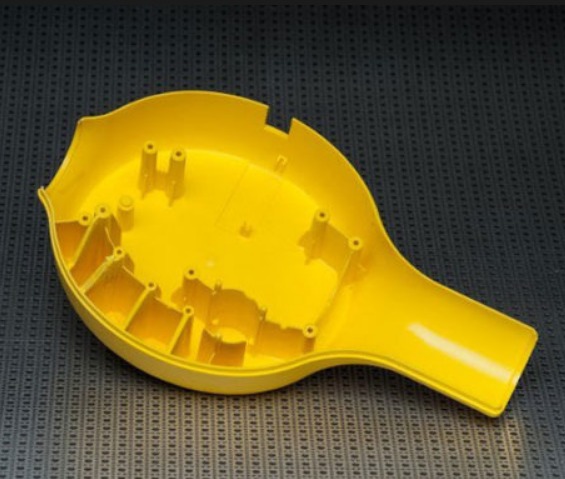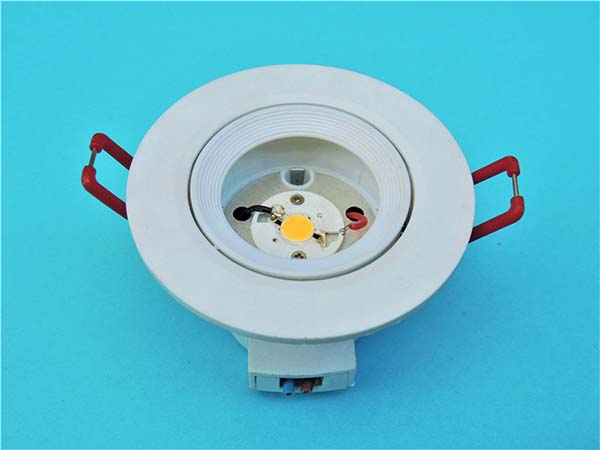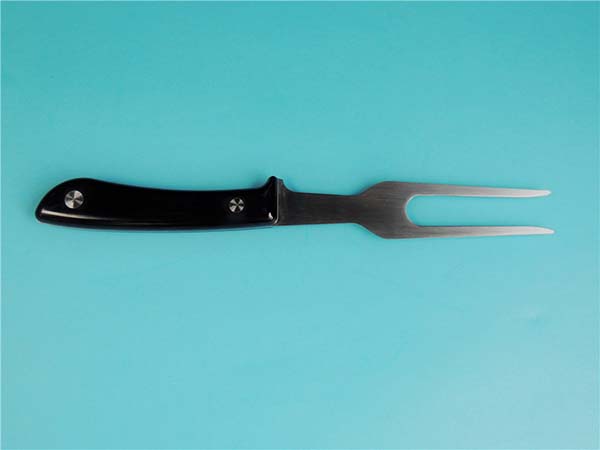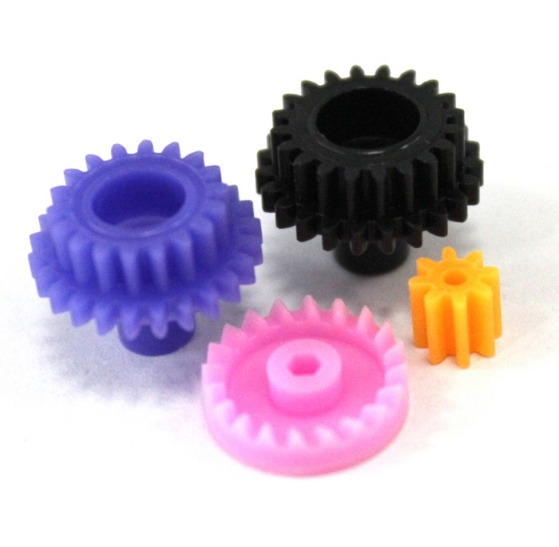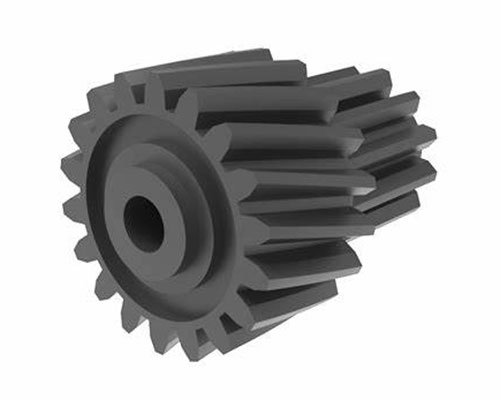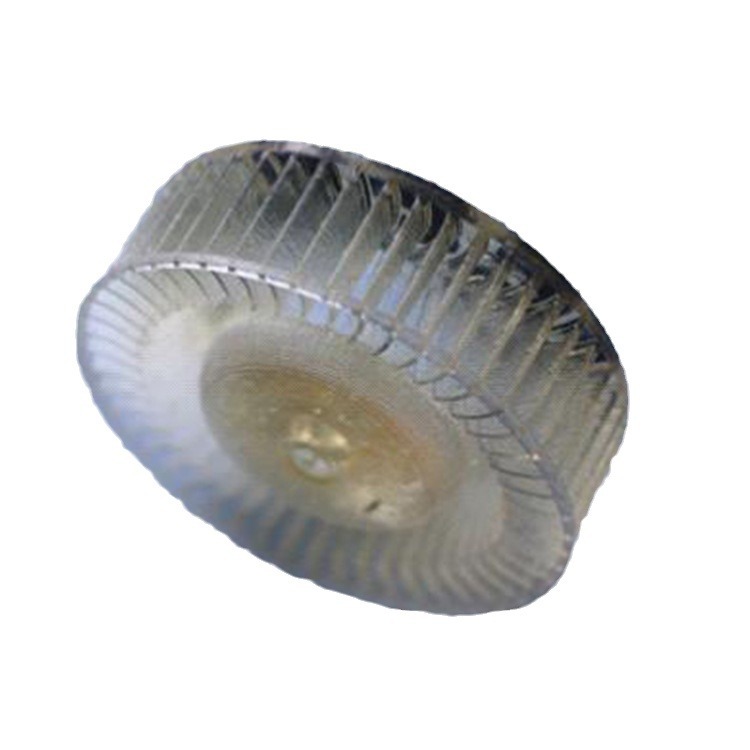Introduction to Micro Plastic Gears
In the vast realm of mechanical engineering, Micro Plastic Gears have emerged as remarkable components, playing a crucial role in the world of tiny scale engineering. These gears are defined as small - sized gears made from plastic materials, with dimensions often measured in millimeters or even micrometers.
What sets micro plastic gears apart is their ability to operate in environments where traditional metal gears might falter. For example, in micro - electromechanical systems (MEMS), which are found in various applications like sensors, actuators, and micro - robots, the size constraints are extremely tight. Micro plastic gears fit the bill perfectly, enabling the miniaturization of these devices. Their small size allows for the creation of more compact and lightweight products, which is a significant advantage in industries such as wearable technology, where every gram and millimeter count.
Moreover, the use of plastic materials in these gears brings a host of benefits. Plastics are generally lighter than metals, reducing the overall weight of the machinery they are part of. This not only makes the products more portable but also contributes to energy efficiency, as less power is required to move lighter components. Additionally, plastics have excellent corrosion resistance. In applications where the gears might be exposed to moisture or chemicals, such as in some medical devices or environmental sensors, this property ensures a longer lifespan and more reliable operation compared to metal gears that could corrode over time. The importance of micro plastic gears in tiny scale engineering cannot be overstated, as they open up new possibilities for innovation and technological advancement in a wide range of fields.
Features of Micro Plastic Gears
Tiny but Mighty Structure
Micro plastic gears are marvels of miniaturization. Their structure is designed to operate in the most confined spaces. The diameter of these gears can range from as small as 0.1 millimeter to around 10 millimeters, with some ultra - small micro plastic gears even reaching the micrometer scale. For instance, in some micro - robotic applications, gears with a diameter of 0.5 millimeters are used. These tiny gears often have a high tooth count relative to their size. A gear with a diameter of 2 millimeters might have 20 - 30 teeth, which allows for precise transmission of motion. The teeth are also designed with great precision, with tolerances in the range of ±0.01 - 0.05 millimeters. This ensures smooth meshing with other gears, minimizing noise and vibration even at high rotational speeds.
Material Marvels
Several plastic materials are commonly used in the production of micro plastic gears, each with its unique set of properties that significantly impact gear performance.
- Nylon: Nylon is a popular choice due to its excellent mechanical properties. It has a high tensile strength, typically around 70 - 90 MPa, which allows the gears to withstand significant forces without breaking. Nylon also has good self - lubricating properties, reducing the need for external lubricants. This is crucial in applications where lubricant contamination is a concern, such as in medical devices. Its low coefficient of friction, around 0.2 - 0.3, ensures smooth operation and reduces wear and tear on the gears.
- Polyoxymethylene (POM): POM, also known as acetal, is another widely used material. It has a high stiffness, with a modulus of elasticity of approximately 2.8 - 3.5 GPa. This stiffness gives POM - made gears good dimensional stability, making them suitable for applications that require high precision. POM also has excellent fatigue resistance, which means it can withstand repeated loading and unloading cycles without significant degradation. In addition, POM has a relatively low moisture absorption rate compared to some other plastics, which helps maintain its mechanical properties over time.
- Polytetrafluoroethylene (PTFE): PTFE, commonly known as Teflon, is used in applications where extreme low - friction properties are required. It has an extremely low coefficient of friction, often less than 0.1, making it ideal for gears that need to operate with minimal resistance. PTFE also has excellent chemical resistance, which is beneficial in environments where the gears may come into contact with corrosive substances. However, PTFE has relatively low mechanical strength compared to nylon and POM, so it is often used in combination with other materials or in applications where the load on the gears is relatively low.
The choice of material for micro plastic gears depends on the specific requirements of the application, such as the operating environment, the load and speed conditions, and the need for precision and durability.
Applications of Micro Plastic Gears
In the World of Electronics
In the electronics industry, Micro Plastic Gears are everywhere, powering some of the smallest yet most advanced devices. In small motors found in smartphones, for example, micro plastic gears are used to drive components such as the camera autofocus mechanisms. A typical smartphone camera module may have a micro plastic gear with a diameter of around 1 - 2 millimeters. These gears enable precise movement of the lens elements, allowing for sharp and clear images. According to industry reports, over 80% of modern smartphone camera autofocus systems rely on micro plastic gears due to their ability to provide smooth and accurate motion in a compact space.
In precision instruments like miniature gyroscopes and accelerometers used in wearable fitness trackers and smartwatches, micro plastic gears play a crucial role. These gears are responsible for transmitting rotational motion to the sensing elements, enabling accurate measurement of movement, orientation, and acceleration. For instance, in a popular smartwatch model, the micro plastic gears in the gyroscope assembly are designed with a tolerance of ±0.02 millimeters to ensure highly precise readings. This level of precision is essential for features such as step counting, sleep tracking, and activity recognition in these wearable devices.
Medical Mini - Marvels
The medical field has greatly benefited from the development of micro plastic gears. In micro - surgical instruments, these gears are used to provide precise and delicate movement. For example, in robotic - assisted microsurgery, micro plastic gears are incorporated into the miniature robotic arms. A micro - forceps used in eye surgery might have a micro plastic gear system that allows for extremely fine - tuned opening and closing movements. The small size and low - friction properties of the micro plastic gears enable surgeons to perform complex procedures with greater accuracy, reducing the risk of damage to surrounding tissues.
In drug delivery systems, micro plastic gears are used to control the release of medications. In implantable drug delivery devices, such as insulin pumps for diabetes patients, micro plastic gears are part of the mechanism that regulates the flow of insulin. A study showed that in a particular type of implantable insulin pump, the use of micro plastic gears improved the accuracy of insulin delivery by up to 15% compared to previous models. The ability to precisely control the amount of drug released over time is crucial for the effective treatment of patients, and micro plastic gears play a significant role in achieving this level of control.
Manufacturing Micro Plastic Gears
Injection Molding Mastery
Injection molding is a widely used manufacturing process for Micro Plastic Gears. The process begins with the careful design and construction of a precision - made mold. The mold is designed to the exact specifications of the micro plastic gear, taking into account factors such as the number of teeth, the gear's diameter, and the thickness of the gear.
Once the mold is ready, the selected plastic material is heated until it reaches a molten state. This molten plastic is then injected into the mold cavity under high pressure. The pressure ensures that the plastic fills every detail of the mold, accurately replicating the shape of the gear. After the mold is filled, the plastic is allowed to cool and solidify. This cooling process must be carefully controlled to prevent any warping or distortion of the gear. Once the plastic has solidified, the mold is opened, and the newly formed micro plastic gear is ejected.
Advantages: Injection molding offers several significant advantages for manufacturing micro plastic gears. One of the main benefits is its high - production efficiency. It can produce a large number of gears in a relatively short period, making it ideal for mass - production applications. For example, in the production of micro plastic gears for small motors in consumer electronics, injection molding can produce thousands of gears per hour. The process also allows for high precision, with tolerances as low as ±0.01 millimeters achievable. This high precision ensures that the gears mesh smoothly and operate quietly. Additionally, injection molding can use a wide range of plastic materials, giving manufacturers the flexibility to choose the material that best suits the application requirements.
Limitations: However, injection molding also has its limitations. The initial investment in mold design and manufacturing can be quite high. A custom - made mold for micro plastic gears can cost thousands of dollars, making it less suitable for small - scale production or prototype development. The process also requires a certain level of expertise to operate effectively. Incorrect injection pressure, temperature, or cooling time can lead to defects in the gears, such as incomplete filling, sink marks, or warping.
3D Printing: A New Frontier
3D printing, also known as additive manufacturing, is emerging as a promising technology for the production of micro plastic gears. In 3D printing, a digital model of the gear is created using computer - aided design (CAD) software. This digital model is then sliced into thin layers, and the 3D printer builds the gear layer by layer, adding material until the final product is complete.
Applications and Characteristics: 3D printing is particularly useful for creating complex gear geometries that may be difficult or impossible to produce using traditional injection molding. For instance, gears with internal cavities, intricate tooth profiles, or non - standard shapes can be easily fabricated with 3D printing. It also offers great design flexibility, allowing for rapid prototyping. Designers can quickly make changes to the digital model and print a new prototype within a few hours, reducing the time and cost associated with traditional prototyping methods.
Development Prospects: Looking ahead, the future of 3D printing in micro plastic gear manufacturing is bright. As the technology continues to advance, the speed of printing is increasing, and the cost is decreasing. New materials are also being developed specifically for 3D printing, which will further enhance the performance of the printed gears. In the coming years, we can expect to see 3D - printed micro plastic gears being used in even more diverse applications, from high - end aerospace components to personalized medical devices. However, currently, 3D - printed gears may have some surface roughness issues, and the mechanical properties may not be as consistent as those of injection - molded gears in some cases. But with ongoing research and development, these limitations are likely to be overcome.
Yigu Technology's View
As a non - standard plastic metal products custom Supplier, Yigu Technology is optimistic about the market prospects of micro plastic gears. With the continuous development of industries such as electronics, medical, and aerospace, the demand for miniaturized and high - performance components like micro plastic gears is bound to increase.
In terms of technology, Yigu Technology believes that continuous innovation in materials and manufacturing processes is the key. Developing new plastic materials with better comprehensive properties, such as higher strength - to - weight ratios and enhanced heat resistance, will expand the application scope of micro plastic gears. Additionally, further improving manufacturing technologies like injection molding and 3D printing to achieve higher precision and production efficiency is also crucial. Yigu Technology is committed to leveraging its expertise to provide customized micro plastic gear solutions, meeting the diverse needs of customers in different industries and contributing to the development of the micro plastic gear field.
FAQ
What are the common materials for micro plastic gears?
Common materials for micro plastic gears include Nylon, Polyoxymethylene (POM), and Polytetrafluoroethylene (PTFE). Nylon has a high tensile strength of around 70 - 90 MPa and good self - lubricating properties with a low coefficient of friction of about 0.2 - 0.3. POM has a high stiffness with a modulus of elasticity of approximately 2.8 - 3.5 GPa, excellent fatigue resistance, and low moisture absorption. PTFE has an extremely low coefficient of friction, often less than 0.1, and excellent chemical resistance, though it has relatively low mechanical strength.
How to ensure the accuracy of micro plastic gears?
To ensure the accuracy of micro plastic gears, precise manufacturing processes are crucial. In injection molding, a well - designed mold with high - precision machining is essential. The injection parameters such as pressure, temperature, and cooling time need to be strictly controlled. For example, maintaining the injection pressure within a narrow range can prevent incomplete filling or over - filling of the mold cavity, which could affect the gear's shape and accuracy. After manufacturing, advanced inspection and measurement techniques like coordinate measuring machines (CMMs) are used to check the dimensions of the gears. CMMs can measure the diameter, tooth profile, and pitch of the gears with high precision, ensuring that they meet the required tolerances, which are often in the range of ±0.01 - 0.05 millimeters.
Can micro plastic gears be used in high - temperature environments?
Micro plastic gears have limitations when it comes to high - temperature environments. Most common plastic materials used for micro plastic gears, such as Nylon and POM, have relatively low heat - deflection temperatures. Nylon's heat - deflection temperature is typically around 60 - 80°C under a certain load, and POM's is around 110 - 130°C. Above these temperatures, the plastic may soften, deform, or lose its mechanical properties, affecting the gear's performance. However, some specialty plastics with enhanced heat resistance can be used in moderately high - temperature applications. For example, certain high - temperature - resistant nylon derivatives can withstand temperatures up to 150 - 180°C. But in general, micro plastic gears are not suitable for extremely high - temperature environments like those found in some industrial furnaces or high - temperature engines without proper heat - management strategies or the use of specialized materials.
